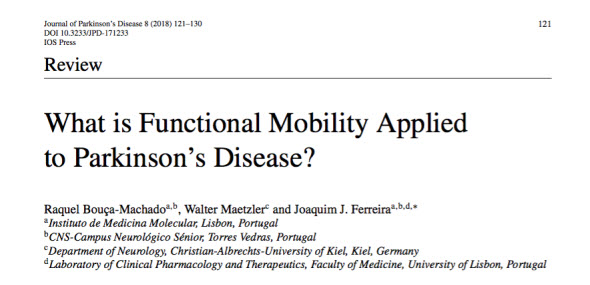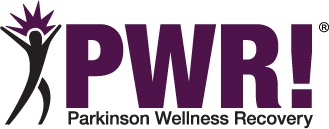Functional Mobility Applied to Parkinson’s Disease Review – Dr. Farley
 I LOVE this narrative review on Functional mobility (see my summary below)! It provides a great rationale for a “function first” approach and highlights the need for lifelong management of functional mobility by physical and occupational therapists. By introducing our clients with Parkinson disease from day 1 to functional skill training using the Basic 4 | PWR!Moves we can target the deficits that interfere with mobility (extension, weight shifting, axial mobility, transitions) and work on multiple symptoms (rigidity, bradykinesia, coordination, automaticity) — all at the same time! Our clients can then continue to rehearse these functional skills for a lifetime, not only in therapy, but anytime, anywhere. GO PWR!Moves®!!!!
I LOVE this narrative review on Functional mobility (see my summary below)! It provides a great rationale for a “function first” approach and highlights the need for lifelong management of functional mobility by physical and occupational therapists. By introducing our clients with Parkinson disease from day 1 to functional skill training using the Basic 4 | PWR!Moves we can target the deficits that interfere with mobility (extension, weight shifting, axial mobility, transitions) and work on multiple symptoms (rigidity, bradykinesia, coordination, automaticity) — all at the same time! Our clients can then continue to rehearse these functional skills for a lifetime, not only in therapy, but anytime, anywhere. GO PWR!Moves®!!!!
The goal of the article was to understand how poor functional mobility interferes with everyday movements for PwP. The authors provide the rationale for why physical therapists are needed for lifelong management of functional mobility for PwP, taking into account environmental and personal factors, resources, motor and non-motor symptoms. They organized the factors that contribute to poor functional mobility using the International Classification of Functioning and Disability (ICF) and reviewed the outcomes tools and interventions that would be most appropriate to address functional mobility across disease severity. The authors go on to summarize the research on aerobics and task-specific training, strategies and assistive devices as effective options. Their description of effective skill training comes from an article by King and Horak 2009 and it sounds like a prescription for PWR!Moves.
-Dr. Becky Farley
“Rehabilitation programs have been reported to be effective in preventing and improving PD patients’ functional mobility when focusing on aerobic exercises and self-initiated movements, big and quick movements, large and flexible centers of mass control, reciprocal and coordinated movements of arms and legs, and rotational movements of torso over pelvis and pelvis over legs.” Pg. 127
Journal link: https://www.ncbi.nlm.nih.gov/pmc/articles/PMC5836402/

????
Thank you for sharing!